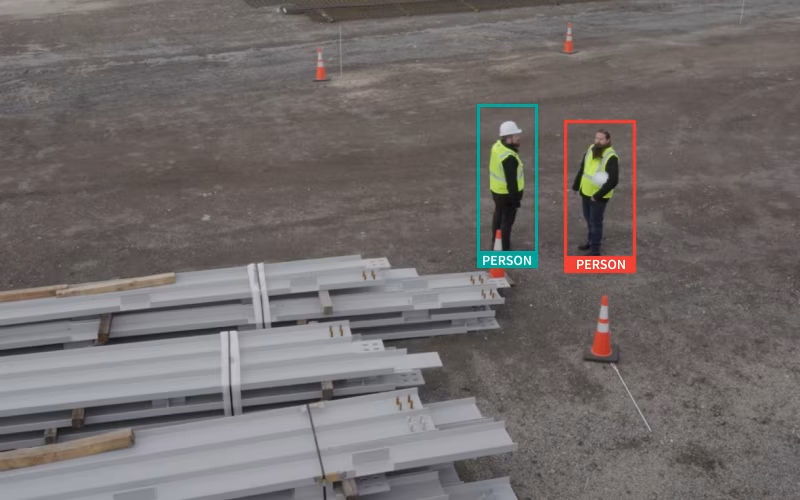The Concentric Rings of Security

It is important to have multiple layers of security to make it harder for criminals to penetrate your business.
My younger brother and I speak in fluent movie quotes. For some bizarre reason we can remember quotes from a movie we saw once 15 years ago but can’t remember what we ate for dinner yesterday. (Just kidding—it was waffles.) One of these quotes is from the movie Shrek where the main character tells Donkey, “Ogres are like onions…Onions have layers. Ogres have layers. You get it. We both have layers.”
So other than a flashback to the early 2000s, there is a point to my random quote. Security has layers just like onions, ogres, and cakes (“Everybody loves cakes. Cakes have layers.” Sorry, last movie quote I swear). In the security world, the layers are often referred to as the rings of security, the concentric rings of security, or even security in depth. Each level, or ring is a differing level of security with the outermost being the easiest to penetrate. The layers are meant to deter threats at an ever-increasing level. Some of the deterrents are visible, like a wall or fence, while others rely on stealth, like motion detection sensors.
Ancient castles or fortresses are great examples of concentric deterrents/rings of security. While they lacked the modern advancements in security, ancient builders were experts at creating physical deterrents. Everything from moats, walls, gates, and drawbridges to the thickness of the walls and the width of the road was planned. They would station guards and purposefully build on the high ground with little to no trees surrounding the fortress so any enemies could be easily spotted before they reached the walls. A concentric castle featured towers, a moat, an outer wall, and an inner wall that all surrounded the inner bailey. Furthermore, the defenders were protected by battlements, embrasures, merlons, and crenels and could shoot and throw projectiles down on the attackers. Any enemy would have to penetrate all of these physical deterrents before they could successfully capture the castle.
Modern building techniques and security have made things like thick walls and moats obsolete and impractical. While they would still work (who wants to swim through a moat to steal lumber from a construction site?), we suggest you refrain from digging a moat around your business. Instead, there are simpler, smarter solutions that can help you create a layered defense on your property.
Outer/first ring
The outer ring is typically the easiest to see and the easiest to penetrate. These are the fences, walls, and gates that surround the perimeter. They are typically the most imposing and the first thing that anyone must get around before they can penetrate your building/location.
Obviously, the cheapest fencing options are going to be the easiest to penetrate. However, it can still help protect your business. Here are a few security pointers to consider when choosing a fence:
- Don’t restrict visibility—Some fencing and walls can create blind spots for your cameras and guards. Make sure you can still see what’s going on and don’t give criminals an opportunity to hide.
- Make it hard to climb—The height of the fence is important here. Obviously, a criminal can hop a waist high fence a lot easier than one that is eight feet tall. Other factors here are the direction of the rails (horizontal is a lot easier to climb than vertical) and if the fence is spiked or pointed at the top.
- Ensure it’s hard to bypass—While a flimsy fence is still an obstacle, it is better to install a fence that is secured to the ground, can’t be easily cut, and has secure gates.
Sometimes it is hard to meet these suggestions, especially if you are only installing a temporary/removable fence at a jobsite. But any fence or wall creates the first security ring.
Second ring
The second ring is the actual building. Every building will have natural weak spots at their doors and windows. Guards are a great way to protect these areas. However, instead of throwing up battlements, this is where we suggest implementing and augmenting guards’ abilities with some modern security measures.
- Install visible cameras—LVT cameras have the flexibility to freely go anywhere outside of your building. In fact, they can even protect and deter the outer ring as well as the second ring. Visible cameras add a deterrent factor while still capturing footage.
- Require keycards/security badges—During business hours you may have to have your front door open, but at night and at backdoors badge scanners are an easy way to prevent just anyone from walking into your building.
- Secure your windows—Newer windows are harder to break, but there are simple steps that can help prevent them from being a target. Refrain from planting tall, obtrusive plants around windows that could hide criminals. Some other simple steps involve installing locks and to avoid placing valuable items in view of the window. Lastly, you can install glass-break and motion sensors to alert you if a window is broken.
Third ring
The third ring is the locked doors inside your business. Simple locks can make a huge difference. Break-ins happen every day in broad daylight because the thief simply walks in an unlocked door or office. To solve this issue, most businesses have moved away from mechanical door locks towards automatic electronic locks. Some of these include keycards, fingerprint scanners, or pin pads. Legally, certain exit doors may not be locked during business hours, however, you don’t want to allow just anyone to wander around your business. Here are some ways to employ locked doors to help secure your business:
- Control who has access—This includes restricting what employees are allowed as well as delivery personnel, visitors, and more. Areas will require different levels of access and will require different personnel in each. For example, the research and development team will be allowed places your clients will not. That is a simple, logical way to protect your business.
- Enforce operating hours—If it’s after business hours, you don’t want someone to walk in off the street regardless of if people are still in the building. However, if your gate and main door are locked as employees leave in the evening it helps ensure that a stranger won’t get very far.
Just because you have locks on your gate and outer door doesn’t mean you can neglect locks on the inside. These add another obstacle for criminals. However, internal locks also help protect your business from liabilities involving employees and customers. For example, if an employee or customer wanders where they are not supposed to, even if they have no malicious intent, they could injure themselves or break some vital equipment.
Fourth ring
Some businesses may or may not have a fourth ring. This level is dependent on what type of business you’re running because it is the lock on the cabinet where assets are stored inside of your building. Obviously, if you’re manufacturing 23-foot, 1,800 pond security trailers you can’t lock those in a cabinet. However, things besides physical products may need to be locked up each night. Here are a few examples:
- Important, confidential information
- IT infrastructure
- Electronics
- Cash
There’s a reason ancient builders put multiple walls, a moat, guards, battlements, and secure gates on their castles, and it wasn’t because they were bored or really liked taking two to ten years to build it. Instead, they wanted to give the defenders the best chance possible to repel intruders. Each layer, each stone made it harder to penetrate the fortress. Similarly, each added layer of security at your property creates another obstacle for those wishing to break in and makes another level of protection.
The concentric rings of security sound redundant. Many may ask why they need locks on interior doors if they have them on exterior doors? After all, you can’t get to an interior door without getting inside in the first place. But that redundancy is a large part of what deters criminals. While it is hard to make a location completely impregnatable, the goal of the concentric rings is to get as close to that as possible. If the obstacles are too great most, if not all, criminals and thieves will go for an easier target. If you can’t deter them, the next goal of the concentric rings is to slow criminals down. This will give you an opportunity for your security team to intervene or to call law enforcement and catch the wrongdoer in the act.



